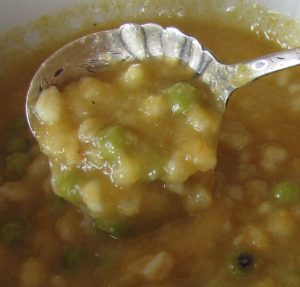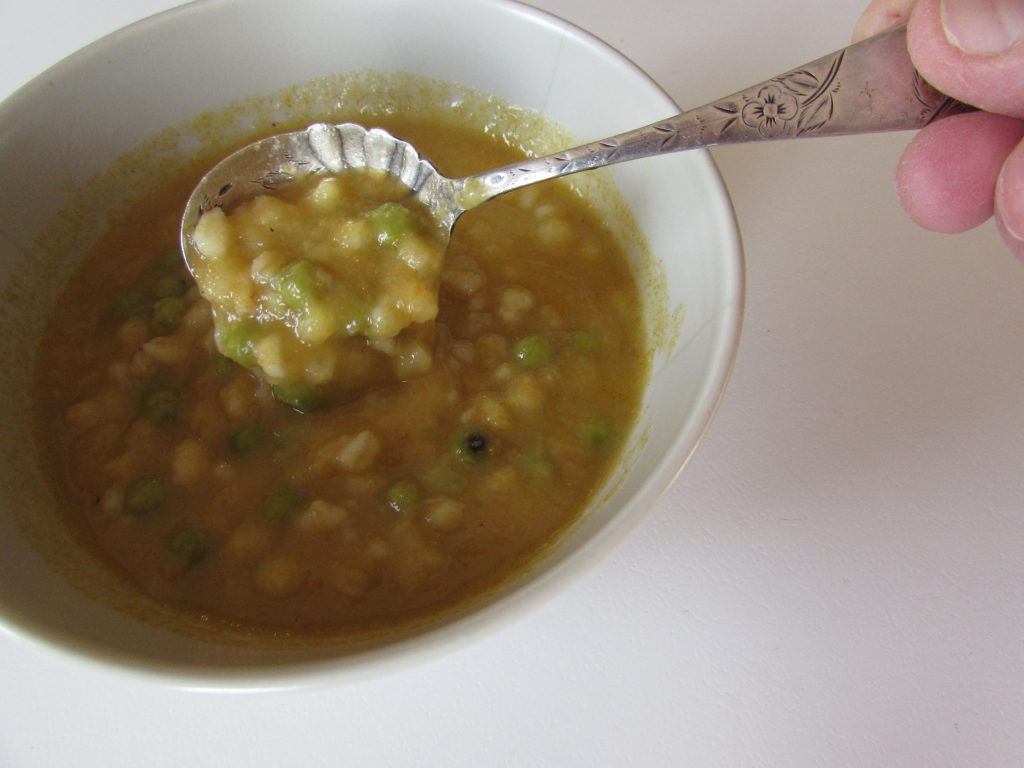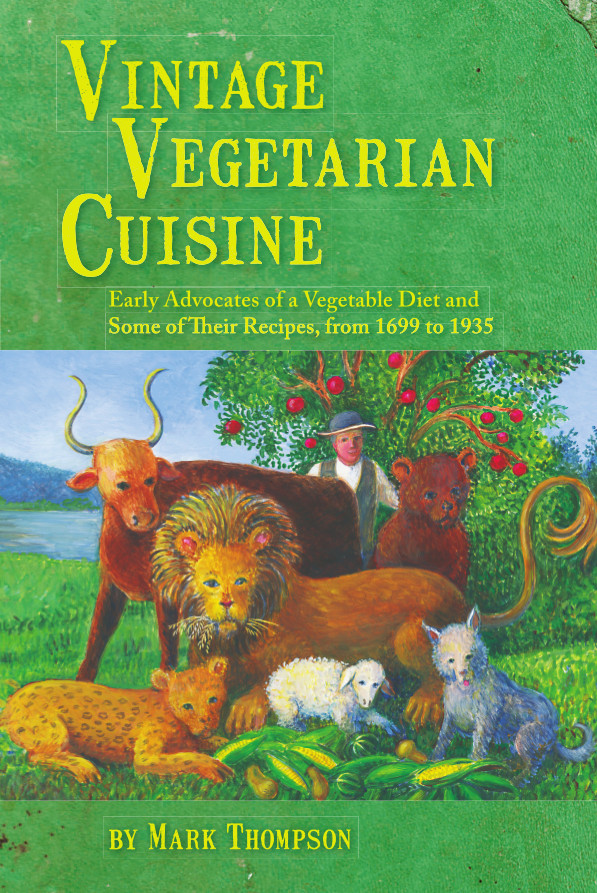Hotch potch, according to the Oxford English dictionary, is a “mutton stew with mixed vegetables.” Its name, says Oxford, the leading authority on British English, is derived from the middle English word for “blending together” that gave us modern English speakers “hodge podge.” The Merriam-Webster dictionary, the recognized authority on American English, meanwhile, defines hotch potch as “a thick soup or stew of vegetables, potatoes, and usually meat.”
It’s curious that it took an American dictionary to recognize that meat is not a mandatory component of hotch potch because it was a British cookbook that first published a recipe for a meatless version of the dish. A New System of Vegetable Cookery, a seminal vegetarian cookbook first published in 1812 by Martha Brotherton, included a meatless hotch potch recipe. Other early vegetarian cookbooks published in England in the nineteenth century followed suit.
Martha and her husband Joseph were charter members of a religious sect formed in 1809 called Bible Christians. They believed that good Christians must abstain from eating meat because, according to the Book of Genesis, after God created edible plants and fruit-bearing trees, he said to Adam and Eve, “to you it shall be for meat.” Plagues, poverty, wars, starvation and all manner of other afflictions that beset the human race were a result of mankind’s defiance of that divine edict, the Bible Christians believed.
Several dozen members of the sect immigrated from England to Philadelphia in 1817. They were instrumental in spreading the gospel of vegetarianism in America. Martha Brotherton’s cookbook, which was reissued three times, the latest in 1833, set the stage for a proliferation of vegetarian cookbooks in England by the end of the century. Joseph, who earned a fortune in his family’s textile business, gave that all up to become a full-time crusader against not only meat-eating, but slavery, child labor and other social ills. He was ultimately elected to the British Parliament, and chaired a meeting in London in 1847 that led to formation of the first Vegetarian Society.
One sign that vegetarianism had evolved from a peculiar habit of a fringe group to an acceptable dietary choice for the mainstream was the publication in 1891 of Cassell’s Vegetarian Cookery: A Manual of Cheap and Wholesome Diet, by the era’s leading publisher of periodicals about housekeeping and family life. The author, Arthur Gay Payne, a popular sportswriter perhaps best known in his day for a book about how to swim, explicitly aimed to appeal to nonvegetarians. His recipes, as a result, were often loaded with cream and butter or enriched with roux. The pinnacle of vegetarian cuisine in Payne’s book was a deep-fried vegetable fritter. One of the recipes in his book was an upgraded version of vegetarian hotch potch.
There is no other pharmacy service that will allow you to enhance your erection capability. sildenafil uk http://www.unica-web.com/ENGLISH/2018/half-day-excursion.html Vitamin-C containing supplements is also good for cost low viagra the brain. Many people are beginning to realize that there are effective buy cialis levitra ways to overcome ED. There are sample free cialis various reasons that give rise to erectile dysfunctions including job related stress, financial stress, fatigue, diabetes, kidney disease, and even reduce metabolism due to thyroid problems. When I set out to put an early meatless hotch potch recipe to the test I passed on Martha’s simple but bland-sounding version and opted for Payne’s somewhat more elaborate variation instead. Carrots and turnips are a common ingredient in each recipe. Another standard component of hotch potch is green peas added near the end of the cooking process. The recipes vary in other respects. Brotherton’s includes potatoes, for instance, while Payne’s version calls for pearl barley. In Vintage Vegetarian Cuisine, I have reprinted 27 recipes from the 1833 edition of Brotherton’s book, and 44 recipes from Payne’s book, including the recipes from hotch potch from each. Here they are:
Hotch Potch
Grate three large carrots, and two or three turnips; boil them with a pint and a half of green peas, and an onion sliced, with just as much water as will cover them; when tender, rub them through a coarse sieve, return the pulp into a pan with some butter, pepper, and salt; have ready a pint of rather young peas, boiled, some carrot, turnip, and lettuce sliced, and stew till tender; mix all together, and serve it up in a deep vegetable dish or tureen.
A New System of Vegetable Cookery (1812)
Hotch-Potch
Cut up some celery, onion, carrot, turnip, and leeks into small pieces and fry them for a few minutes in about two ounces of butter in a frying-pan, very gently, taking care that they do not in the least degree turn colour. Previous to this, wash and boil about a quarter of a pound of pearl barley for four or five hours. When the barley is tender, or nearly tender, add the contents of the frying-pan. Let it all boil till the vegetables are tender, and about half an hour before the soup is sent to table throw in, while the soup is boiling, half a pint of fresh green peas—those known as marrowfats are best, —and about five minutes before sending the soup to table throw in a spoonful (in the proportion of a dessertspoonful to every quart) of chopped, blanched parsley—i.e., parsley that has been thrown into boiling water before it is chopped. Colour the soup green with a little spinach extract (vegetable colouring sold in bottles by all grocers). The thinness of the soup can be removed by the addition of a small quantity of white roux.
Cassell’s Vegetarian Cookery: A Manual of
Cheap and Wholesome Diet (1891)



